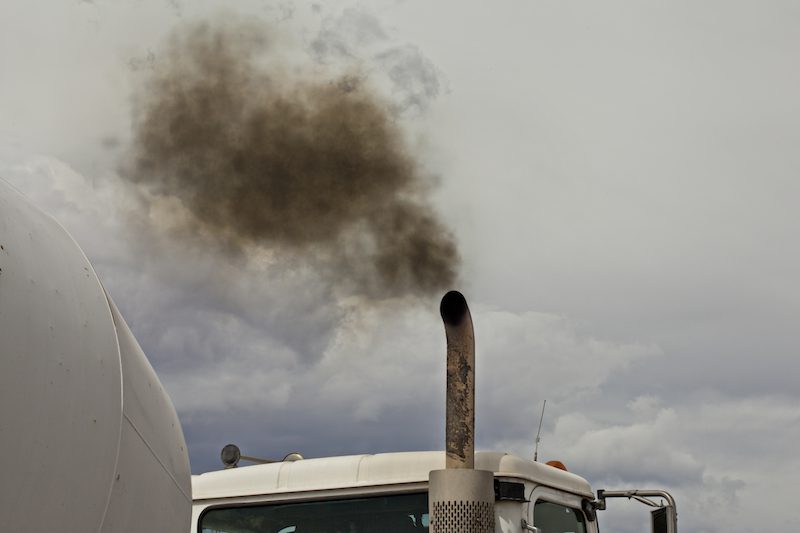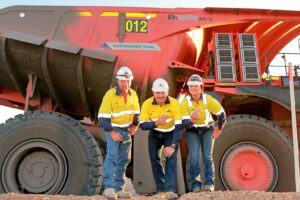Long term exposure to diesel fumes could well be the next biggest occupational health threat since asbestos, exposing the Australian and world mining and trucking industries to multiple public liability claims says hydraulic engineer and inventor, Norm Mathers.
‘Despite numerous medical studies over the past decade finding that long term exposure to diesel fumes is likely linked to an array of serious health issues, particularly cancer and dementia, large multinational trucking and mining companies have continued to ignore the warnings’ Mr Mather has warned.
As a result of these warnings, the European Union Commission has demanded direct action on reducing use in trucks and buses by 2025.
Further, in June 2012 the International Agency for Cancer Research (IARC) classified diesel emissions (including diesel particulates matter) as a known human carcinogen.
Similar to coal dust, diesel exhaust includes inorganic particulate matter, which is largely carbon. Being inorganic, it is likely to be insoluble in the body, and, it would seem, could affect the body in a similar manner as coal dust which has been found to be a direct cause of black lung disease.
Trucking industry continues to ignore technology to reduce emissions
Mr Mathers recognised as one of the world’s leading hydraulic engineers, said world-leading technology exists currently in Australia to reduce harmful diesel emissions, however, trucking and mining companies have refused to use it.
“Exhaust chemical cleaning was introduced in the 2012 period, yet there was only limited industry response to reduce diesel use, despite the full knowledge that technology exists to reduce fumes which could make a monumental difference to the protection of the public, exposed workers and drivers’ health.”
“It beggars the question why? Universally whenever discussions are raised on this issue, people express the opinion that they hate to think that bottom line profits are being put before workers and public health and wellbeing,” Mr Mathers said.
Mr Mathers has investigated the issue with worlds’ leading scientists and engineers through his Australian innovation company, Mathers Hydraulics Technology (MHT), which has developed a technology which reduces diesel emissions by turning engines off when idle and thereby reducing emissions significantly in heavy traffic conditions.
Stop/Start technology on petrol cars has proved to be both highly effective and widely accepted in reducing emissions. However, up until now the same benefits of stop/start technology have not been available for larger diesel engines because of the need for a high-speed starter motor.
How does the technology work?
Using its fuel-saving vane pump, MHT has developed a high-speed stop/start motor which also powers an accumulator during braking for energy storage. This currently wasted braking energy is added back in to reduce fuel use.
US machinery giant, Caterpillar, under the direction of Dr Philip McCluskey, today a key Mathers Hydraulics advisor, used a similar technology to great effect on hydraulic excavators that was highly effective in capturing and storing up to 12 per cent energy in hydraulic accumulators; which saved up to a significant 40 per cent diesel usage on a machine.
In 2011, MHT in collaboration with engineers from Mack Trucks and Volvo in Brisbane outfitted two tip/dump trucks with the MHT emissions-reducing technology cited above. These trucks were widely displayed around Australia to both contractors and government to positive feedback. Unfortunately, Volvo in Sweden vetoed in-house body assembly using non-standard products which effectively stopped the introduction of the technology in Australia.
Mr Mathers conceded that companies have introduced chemical exhaust cleaning and improved engine efficiencies, however, they had made no concentrated effort to meet the EU commission initial 30 per cent CO2 reduction targets.
Mining industry facing the same issue
A serious threat also exists for mines that use diesel machinery underground as well as above ground, exposing workers to high levels of nano diesel particulates. Nano diesel particulate matter (nDPM) is so small it is described as being less than a hundredth of the width of a human hair.
The tiny particles, when inhaled, can reach deep into the body and stay there for months.
Recent media reports have cited a recent study in Western Australia which highlighted the high risk of lung cancer among miners in confined spaces underground.
Testing at a Western Australian mine found levels of up to a million nano diesel particulates per cubic centimetre. According to experts, that is about 100 times more than people would inhale if they were walking down a busy city street.
Mr Mathers said currently, there is no legal limit in Australia for exposure to diesel emissions but there are guidelines which recommend an average exposure of 100 micrograms per cubic metre of the large diesel particulates. Current Safework Australia Occupational exposure standards for DPM do not exist, however, the Australian Institute of Occupational Hygienists, (AIOH) has set a guideline concentration where worker exposure to DPM levels should be controlled to below 0.1 mg/m3 as an 8-hour time-weighted average value, measured as submicron elemental carbon
According to government regulators, mining companies are required to control workers’ exposure to diesel emissions under 14 regulations.
These include providing adequate ventilation and airflow where diesel units are being operated. The act also sets limits for maximum exhaust emissions of oxides of nitrogen and carbon monoxide.
EU Commission changes reduction target in CO2 emissions
Some governments have already commenced the action to mitigate the long term exposure to diesel fumes on their populations.
To enforce a more proactive and timely response from the trucking industry, the European Union Commission increased its target of 30 per cent CO2 reductions by 2030 from 20 per cent by 2025 and 35 per cent by 2030 on Class 8 heavy trucks and buses. It has also banned older diesel cars from 2022 onwards.
In Germany, nine cities including Berlin, Munich and Frankfurt have announced a ban of older diesel vehicles from being driven in the city centres because of the proven public health explosion.
India has banned ten-year-old diesel trucks from its cities. India via its city pollution is estimated to lose 1.24 million people to early death.
Australia must take this issue seriously
Mr Mathers said he is simply echoing public sentiment when stating Europe is again showing the way by enacting positive and practical solutions and Australia should simply introduce identical enforced legislation.
“Australia needs to change our emission targets to mirror that of the EU Commission,” he said.
“In order to achieve a 35 per cent reduction in emissions by 2030, it is impossible unless you can capture braking energy in trucks and buses.”
“By definition, it has to be applied to buses, waste trucks, delivery trucks, Class 8 trucks as well as all underground and above ground mining machinery.”
“Lastly, there needs to be a lot more research into the association between diesel emission exposure and coal dust which causes black lung and similar diseases,” he added.
Read more Mining Safety News














Add Comment